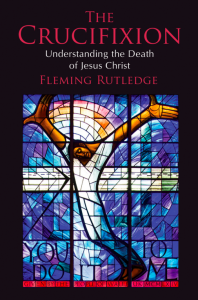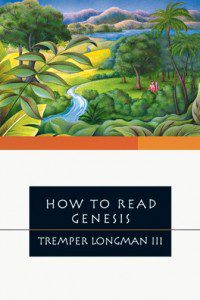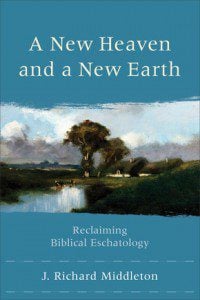In Part 1 of my response to Kevin DeYoung’s article, “Our Pro-Woman, Complementarian Jesus” I note DeYoung’s failure to provide biblical evidence in support of his claim that Jesus intended “only men” to be in “positions of leadership.” I argued that Jesus never stated that his choice of twelve apostles was meant to exclude women, nor does the Bible ever clearly teach this. Part 1 establishes that, to the contrary, Jesus did appoint women as his authoritative messengers, and both the Old and New Testaments affirm many women in authority and leadership.
DeYoung makes two other assertions. First, he states, “The Jewishness of the apostles is linked to a particular moment in salvation history, while their maleness is not. After Pentecost, the kingdom Jesus ushered was no longer for the Jews alone.” Second, he states, “when the disciples needed a successor to Judas, the apostles looked for a man who had been with them (Acts 1:21-22).”
Regarding the first assertion about the maleness of the apostles, the Bible never uses the Greek word for “male” (ARSHN) regarding the apostles. Galatians 3:28, however, does assert, “there is no male (ARSEN)/female division in Christ.”
Furthermore, the selection of Matthias to replace Judas (Acts 1:15-26) occurred before Pentecost (Acts 2), when God poured out the Spirit on “men and women” (Acts 2:17-18), not after as, “After Pentecost … the apostles looked for a man” implies. The selection of a man to replace Judas prior to Pentecost should not be used to exclude women from church leadership after this transformative outpouring.
The apostles did not cease to be Jews after Pentecost any more than they ceased to be men, so it is incorrect to assert that their Jewishness “is linked to a particular moment in salvation history” prior to Pentecost “while their maleness is not.”
Paul did everything he could to realize the social implications of Galatians 3:28 in the life of the church, as his conflict with Peter in Galatians 2:11-14 and his affirmation of seven women colleagues in ministry in Romans 16 demonstrate.
Regarding the transformed body of Christ, and the specific context of special privileges being given to certain groups, Paul asserts, “there is no Jew/Greek division, no slave/free division, and no male/female division for you are all one in Christ Jesus” (Galatians 3:28, Man and Woman: One in Christ 79-104). Paul reiterates this principle in 1 Corinthians 11:11-12 (MW 189-98), “the important point, however, is that woman is not separate from man, nor is man separate from woman in the Lord, for just as woman came from man, so man comes through woman.”
1 Corinthians 7, Paul’s most detailed treatment of marriage, specifies exactly the same conditions, opportunities, rights, and obligations for the woman as for the man regarding twelve distinct issues about marriage (vv. 2, 3, 4, 5, 10-11, 12-13, 14, 15, 16, 28, 32 and 34a, and 33 and 34b, MW 105-8). In each, he addresses men and women as equals. His wording is symmetrically balanced to reinforce this equality. It is hard to imagine how revolutionary it was for Paul to write in 7:4, “the husband does not have authority over his own body, but his wife does.”
DeYoung asserts, “After Pentecost, the kingdom Jesus ushered was no longer for the Jews alone.” However, Jesus did usher non-Jews into the kingdom through faith. For example, Jesus proclaimed the gospel to the Samaritan woman, “Yet a time is coming and has now come when the true worshipers will worship the Father in spirit and truth… I who speak to you am he [the Messiah]…. Many of the Samaritans from that town believed in him because of the women’s testimony… [Jesus] stayed two days. And because of his words many more became believers… that this man really is the Savior of the world” (John 7:22, 26, 39, 41, 42). It is there in Samaria in the middle of this incident that Jesus says, “Open your eyes and look at the fields! They are ripe for harvest. Even now the reaper… harvests the crop for eternal life” (John 4:35-36), a harvest already begun by the Samaritan woman Jesus trained to evangelize.
The New Testament often affirms Jesus’s mission to the nations: “he will proclaim justice to the nations…. In his name the nations will put their hope” (Matthew 12:18, 21). Simeon “took him [baby Jesus] in his arms and praised God, saying… my eyes have seen your salvation, which you have prepared in the sight of all people, a light for revelation to the gentiles and for glory to your people Israel” (Luke 2:28, 30-32). Jesus himself, prior to Pentecost, gave the Great Commission to make disciples of “all nations” (Matthew 28:18-20). Jesus highlighted God’s reaching out to non-Israelites in the Old Testament in Luke 4:25-27. This was so radical that “all the people in the synagogue” tried to kill him (4:28-30). Jesus also healed various believing non-Jews, such as the Samaritan leper who had faith (Luke 17:17) and the centurion whose servant Jesus healed and of whom Jesus said, “I have not found anyone in Israel with such great faith” (Matthew 8:10; Luke 7:9).
DeYoung asserts, “when the disciples needed a successor to Judas, the apostles looked for aman who had been with them (Acts 1:21-22).” Even if Acts 1:21-22 unambiguously limited the group being considered to males, which it does not, it is not fair to cite this as evidence that Jesus was complementarian, since this was not Jesus’s decision, but his disciples’.
DeYoung appears to be ignorant that the word for “a man” here (ANHR) can either mean “an adult human male, man, husband” or be equivalent to TIS–“someone, a person” (Bauer-Danker-Arndt-Gingrich, Lexicon, 79). In the following New Testament cases, ANHR almost certainly includes women:
Luke 11:32 “The people (ANDRES) of Nineveh will rise up in the judgment against this generation.” In Jonah 3:5, “The Ninevites believed God… all of them from the greatest to the least put on sackcloth” (cf. 4:11). The context clearly includes women.
Matthew 14:35-36 “And when the people (ANDRES) of that place [Gennesaret] recognized him [Jesus], they sent word to all the surrounding country and brought to him all who were sick and begged him to let the sick just touch the edge of his cloak, and all who touched him were healed.” In light of how much women gave care to the sick, it is unlikely that no women participated in bringing “all who were sick” from “all the surrounding country” to Jesus.
James 1:12 “Blessed is anyone (ANHR) who perseveres under trial, because when he has stood the test, he will receive the crown of life that God has promised to those who love him.” The masculine pronouns (he) in v. 12 are generic masculine grammatical forms that do not exclude women. Does anyone dare to say that God offers the crown of life only to men or that only men love God?
James 1:20 “Human (ANDRAS) anger does not bring about the righteous life that God desires.”
James 3:2 “If anyone (TIS) is never at fault in what he says, he is a perfect human (ANHR), able to keep his whole body in check.” “Anyone” clearly includes women. “He” is generic and does not exclude women.
George F. Somsel cites a reference to the goddess Athena as “a man [ANHR] of plants” meaning a gardener. Here ANHR has no male reference and must mean simply “person.”
The fact that they chose between two men does not imply that they could not have chosen a woman. Shortly before this, Acts 1:14 refers to “the women and Mary the mother of Jesus, and his brothers” meeting along with the eleven.
Lest there be any doubt that a woman could be an apostle, Paul identifies Junia as “outstanding among the apostles” and “in Christ before I was” (Romans 16:7), probably because she was an eyewitness of the risen Christ, since that was one of the qualifications of an apostle. Junia is a common Latin woman’s name and there is no credible evidence it was ever a man’s name. The only textual variant is “Julia” (MW 65-67).
Chrysostom, the Archbishop of Constantinople in the 300s wrote of Junia, “Even to be an apostle is great, but also to be prominent among them–consider how wonderful a song of honor that is. Glory be! How great the wisdom of this woman that she was even deemed worthy of the apostle’s title” (In ep. ad Romanos 31, 2). Bishop Theodoret of Cyrus identified Junia as a woman “of note, not among the pupils but among the teachers, and not among the ordinary teachers but among the apostles” (Patrologia Graeca 82 col. 220; Ancient Christian Commentary Series 6:372).
It was Greek and Hebrew convention when referring to a group of people to use masculine grammatical forms. In An Introduction to the Study of New Testament Greek, 5th ed., J. H. Moulton writes, “The masculine is used in speaking of persons generally, even when women are meant: as in Acts 937, Mark 538” (109). Similarly, masculine is the “prior gender” in Hebrew, used for groups including women (Kautch-Cauley, Hebrew Grammar). Because of their androcentric culture, they used masculine grammatical forms to refer to people in general. Accurate translations substitute expressions that clearly apply to men and woman.
Consequently, masculine grammatical forms in Greek do not imply the exclusion of women. These are ubiquitous throughout the New Testament. For example, Mark 8:34 “If anyone (TIS) would come after me, let that person deny himself (masculine singular) and take up his (masculine singular) cross and follow me.” For just a smattering of similar cases, see: Matthew 5:19; 10:22;16:24; 18:4; 24:12-13; Mark 9:35; Luke 9:23; 14:25-26, 27, 28-30; John 7:37-38; 9:31; 11:10;12:26, 26, 47; John 14:23, 24; 15:5; Romans 2:6; 8:9; 1 Corinthians 2:14; 3:12-15, 17; 5:11; 8:3,10; 10:28; 11:27-30; 14:24-25; 2 Corinthians 10:7; Galatians 6:3-5; 2 Thessalonians 3:14; 1 Timothy 5:8; 6:3-5; 2 Timothy 2:21; James 1:5-8; Revelation 3:20.
These observations show why DeYoung’s first point, that Jesus was pro-woman, is so widely accepted among scholars, but not his second main point, that Jesus was complementarian in the narrow sense that excludes women from leadership. One wonders how the photo of a woman with no head perched on a stump in DeYoung’s article relates to his thesis.


















